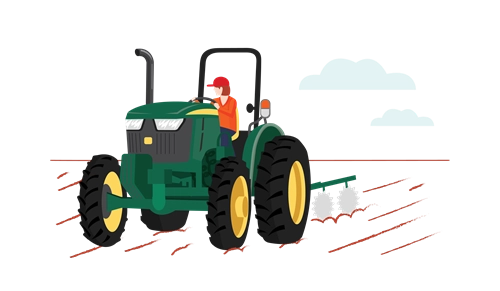-
Curriculum alignment
Design and Technologies
AC9TDE10K05 – analyse and make judgements on how the sensory and functional properties of food influence the design and preparation of sustainable food solutions for healthy eating.
Science
AC9S10U07 – identify patterns in synthesis, decomposition and displacement reactions, and investigate the factors that affect reaction rates.
AC9S10I02 – plan and conduct valid, reproducible investigations to answer questions and test hypotheses, including identifying and controlling for possible sources of error and, as appropriate, developing and following risk assessments, considering ethical issues and addressing key considerations regarding heritage sites and artefacts on Country/Place.
- S
- T
- E
- M
Food innovation and molecular gastronomy
Years 9 and 10
Learning hook
Show students an array of interesting food products, such as freeze-dried fruit crisps, ice cream or bubble tea. Note the different and surprising textures of these products.
Ask students to identify a range of textures in the foods they enjoy, such as the foam of a coffee , the silkiness of mayonnaise or the lightness of chocolate mousse. Ask students to consider the role of texture in our experience of food.
Ask students, how is cooking like chemistry? How is it different? Ask students to construct a Venn diagram and discuss how the two disciplines are related.
Learning input
Explain to students that ‘molecular gastronomy’ is a branch of food science which considers the physical and chemical transformations that occur in cooking. Understanding the science of cooking can lead to innovative and surprising dishes. The term was coined by two Oxford physicists, Nicholas Kurti and Hervé This, in 1988.
Molecular gastronomy also studies heat conduction, convection and transfer, physical aspects of food interaction, stability of flavour, solubility problems, dispersion and the texture–flavour relationship. Some molecular gastronomy techniques include:
- dehydrating to change flavour and texture
- spherification
- creating new food textures (gels, foams, glass-like food)
- flash freezing using liquid nitrogen
- carbonating to make an ingredient effervescent.
Girls in focus
Girls are often unaware of the diversity of careers in STEM. Food science and food innovation isn’t just about chefs in restaurants – new food product design and testing also considers the role of sensory perception in the design of aroma, flavour and texture of foods.
Girls may be interested to watch this video about Moroccan chef Najat Kaanache’s innovative approach to food, or consider sensory and consumer scientist Dr Astrid Poelman’s role in food innovation.
Learning construction
Students can explore the use of molecular gastronomy techniques to design unique and sustainable solutions to healthy eating.
Part A: creating new food textures
1. Spherification experiments
Have students watch this video about using spherification in cooking. Spherification involves creating semi-solid spheres with thin membranes out of liquids, which are filled with a non-gelled liquid. When bitten, the sphere bursts in the mouth, releasing the liquid.
In spherification, calcium chloride reacts with sodium alginate, creating a gel capsule that contains a liquid and bursts when squeezed. The gel formation occurs because the calcium replaces the sodium ions which ‘links’ the polymer chains together, forming a cross-linked network that keeps the liquid contained.
Students can explore the weird and wonderful world of spherification by engaging with these experiments designed by Dittmar, Zoward, Yamashita and Eilks (2016). Students can form alginate bubbles and experiment with adding an acid-base indicator, create luminescent bubbles or add a thermochromic ink.
As students conduct each experiment, encourage them to consider which variables they could change, such as the temperature of the solution, the amount of reagent used, the time in the calcium chloride solution or the height from which the alginate solution is dropped. Provide time to explore and record the effect of changing these variables.
Note that molecular gastronomy also considers the final appearance and texture of the food. Discuss with students how they can record this.
Girls in focus
When students work in pairs or small groups, notice who typically takes the lead in manipulating equipment and materials. Some students may lack confidence to take a key role in practical situations and frequently take on the role of note taker or recorder. Ask students to record their roles for each practical experience and ask them to switch roles frequently to provide equitable hands-on opportunities.
2. Agar spaghetti
Have students watch this video showing how to make agar fruit spaghetti.
Ask students to work in pairs to design their own experiment to create a fruity gel strand using juice and agar flakes. Students can reflect on the spherification experiments to identify the variables they will need to consider.
Support students to conduct their experiments and share their findings with the class.
Girls in focus
Providing a video methodology, contextualised in a kitchen environment, may engage a wide range of students than an experimental method. Making connections between STEM and careers that are typically perceived to be more creative encourages students to appreciate the potential of the STEM field.
Part B: designing a signature dish
Students incorporate the two techniques they have learned to design a signature dish. It can be sweet or savoury, and can include other components, but must feature innovative use of gels and represent a healthy, sustainable food solution.
Students should consider the flavours, textures and appearance of their dish. They can sketch their dish and annotate it to show different components.
Girls in focus
Girls have been shown to be highly motivated by opportunities to express their creativity. By providing a creative purpose for experimentation, students who may have thought chemistry was ‘not for them’ may be encouraged to experiment purposefully. This task also enables students to showcase cuisines that reflect their cultural backgrounds.
-
Rubric
Assessment
Criteria
Beginning
Achieved
Exceeded
Spherification experimental report
Changes one variable, controls other variables and forms a reasonable conclusion.
Changes two or more variables while controlling other variables and forms an evidence-based conclusion.
Changes two or more variables, including changing multiple variables at a time while controlling others, and forms evidence-based conclusions.
Agar spaghetti experimental report
Designs a methodology, including changing one variable and controlling others. Forms a reasonable conclusion.
Designs a clear methodology, including changing two variables while controlling others. Forms an evidence-based conclusion.
Designs a reproducible methodology, including changing multiple variables at a time while controlling others. Forms evidence-based conclusions.
Signature dish design
Dish uses spherification or agar spaghetti and shows consideration of appearance.
Dish uses gels in interesting ways and considers flavour and texture of components.
Dish uses gels in innovative ways and explores interesting flavour and texture combinations.
Signature dish annotation
Annotations indicate that foods used are healthy.
Annotations indicate that foods used are healthy and preparation techniques are sustainable.
Annotations indicate that foods used are healthy and food preparation is sustainable from ‘paddock to plate’.
Communication
Reports and signature dish communicate key ideas, findings and arguments, including selection of some appropriate content, language and text features.
Reports and signature dish clearly communicate ideas, findings and arguments including appropriate use of content, language and text features.
Reports and signature dish communicate ideas, findings and arguments effectively, including selection of appropriate content, language and text features.
Resources
- Re-inventing Moroccan Cuisine: Meet Najat Kaanache
- Molecular Gastronomy - Fruit Spaghetti Recipe
- Transform Drinks Into Semi-Solid Juice Balls That Pop in Your Mouth
- Molecular gastronomy in the chemistry classroom
- Hydrogels in the kitchen (University of Delaware)
- Characterization of flavoured sweet water balls prepared by basic spherification technique










